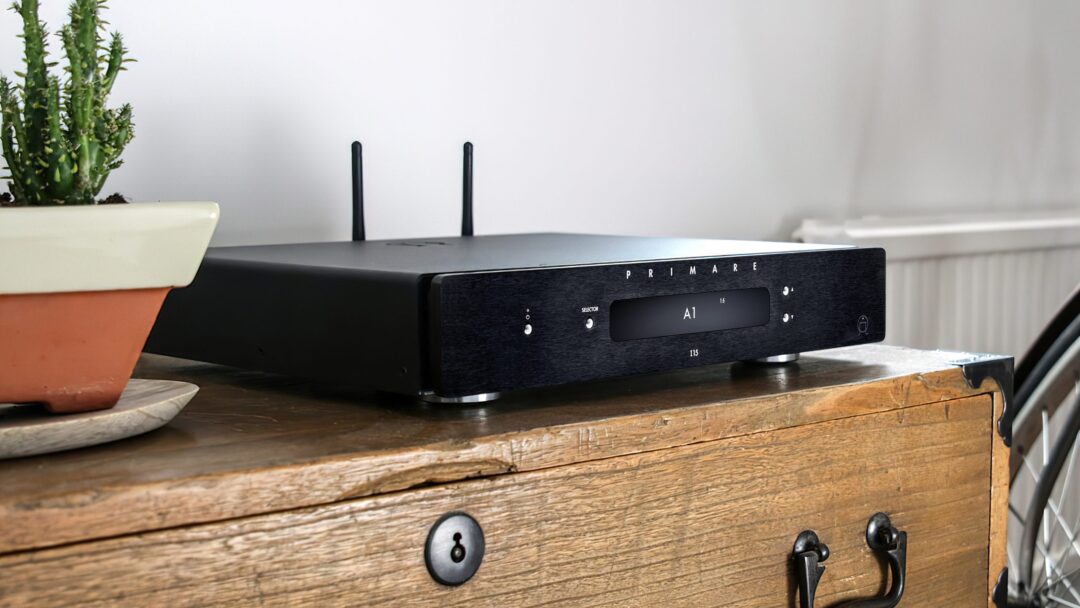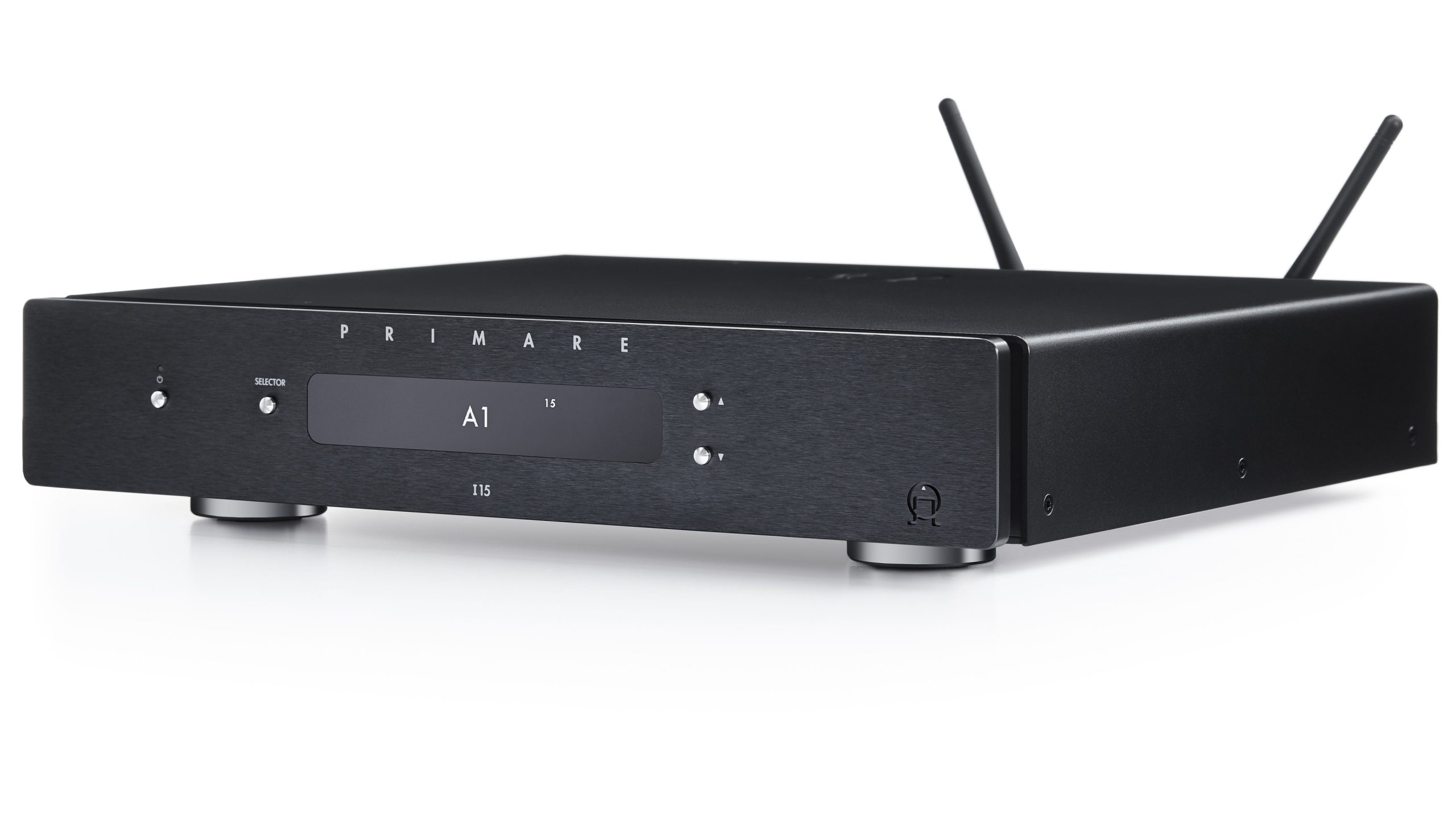I15 Prisma is Primare’s most affordable power amplifier. It has a small and practical footprint, but still oozes quality with a metal cabinet and a front in anodised aluminium. Where the big brothers are built around the Swedish manufacturer’s own Class D amplifier technology, called UFDP 2, the choice in I15 has is built over the off-the-shelf product from Hypex. There is nothing wrong with that, as Hypex makes some of the best Class D amplifier modules we know of. Class D has the advantage of being more efficient than traditional Class AB, and thus provide more power from a lighter and smaller cabinet. No large ring core transformer or solid components are needed for cooling here.
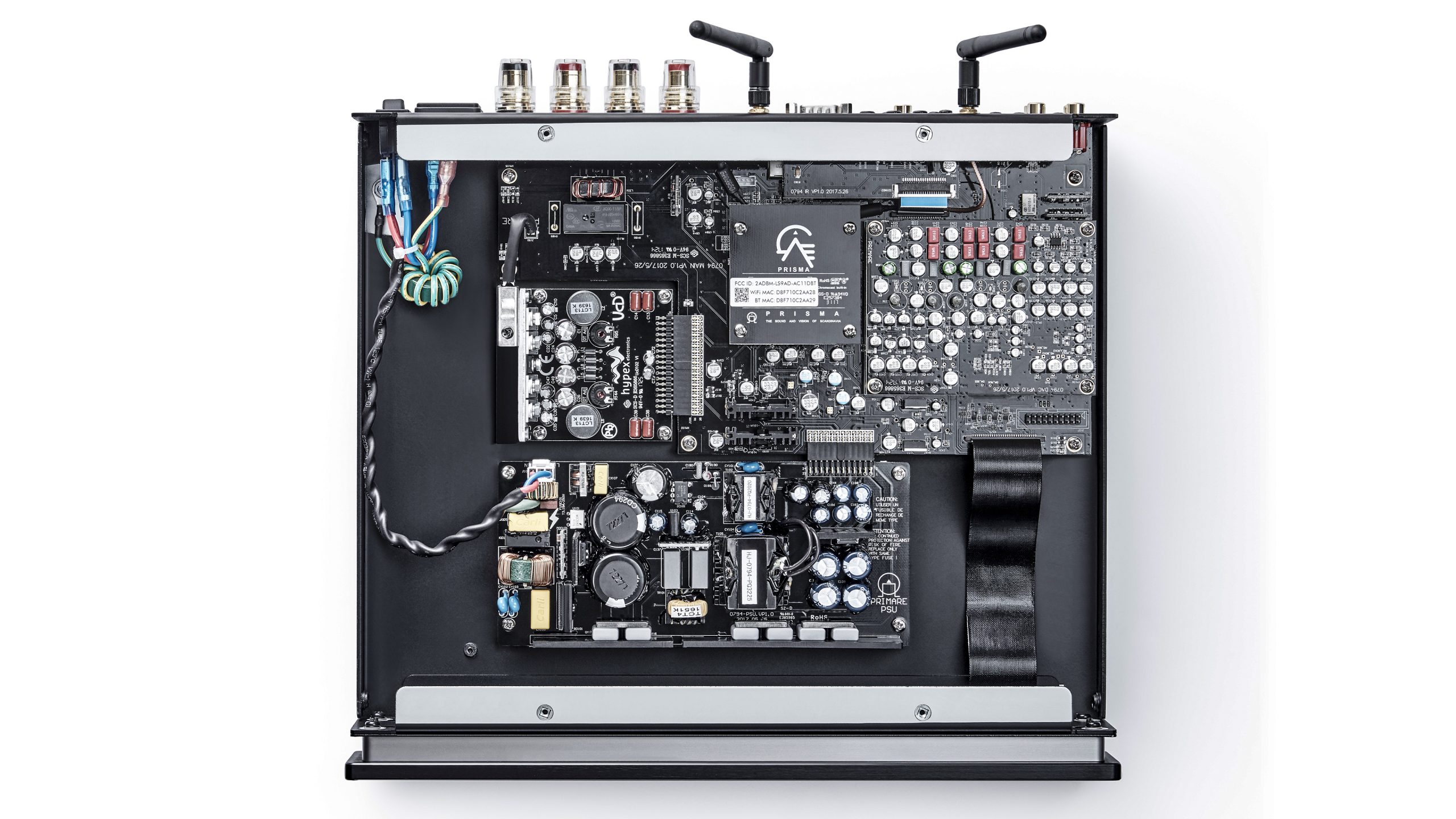
The digital part of I15 Prisma handles music files with a resolution of up to 384 kHz PCM, and the much rarer DSD format (known among other things from SACD), is decoded in up to 5.6 MHz resolution (DSD128).
If you want the amplifier without the digital part and streaming, it is available in two alternative variants, both of which are slightly cheaper: I15 with only the amplifier part and analog inputs, and also I15MM which also has a turntable input.
Streaming
All current products from Primare bear the name Prisma. This is not a separate platform, but rather a collection of well-known power solutions on one and the same card. Both AirPlay 2 and Chromecast are built-in, allowing you to easily stream music losslessly directly from your mobile phone, whether you have an iPhone or Android, Mac or PC. If you are a Spotify user, you can also use the Connect function.
Roon Ready certification is also on the way, allowing Roon users to find the amplifier in the list of audio sources, and play music up to 24-bit/384 kHz directly over the network. When I connected to Roon, I found I15 Prisma in the list of Roon Ready devices, but when I tried to select it, a message came that the product has not yet been approved. But the product was also in the list of Chromecast devices in Roon, so I could play that way. But then only with a maximum of 48 kHz resolution (all music files can be played, they are only downconverted in the player).
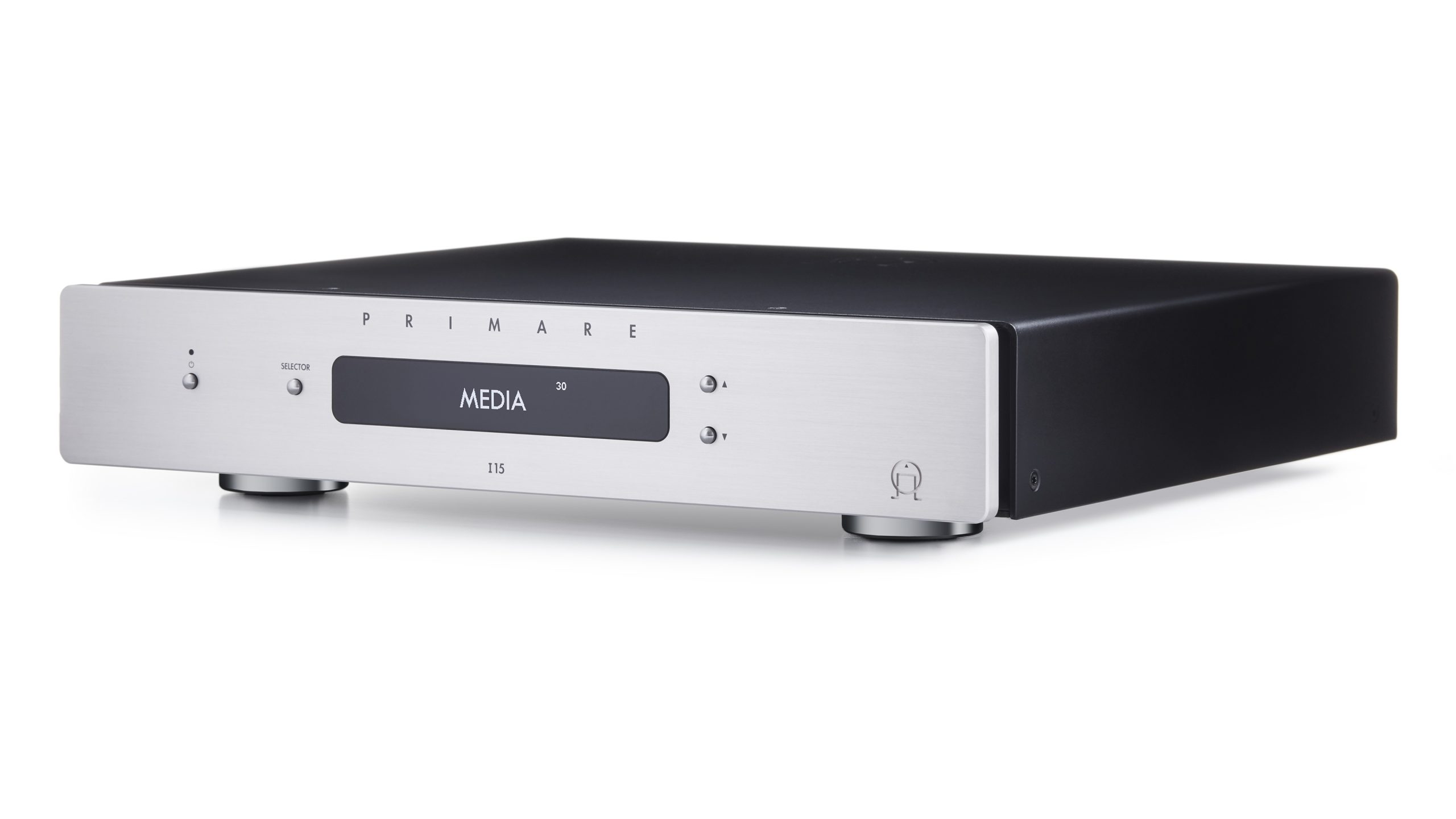
Setup
If you want to connect I15 Prisma to Wi-fi instead of network cable, this is done in the Google Home app. The amplifier automatically appears as “New device found”, you just click on it and follow the setup.
You can change the name of inputs in the setup menu, and also disable inputs you do not use. You can also select Auto Sense so that the amplifier is automatically set to the input that receives the signal. That is, where you play music.
Each input can have a locked or variable volume level, nice if you want to connect the front channels from a surround processor to an input on the amplifier, for example, to include it in the signal chain. The sound level at each input can also be trimmed so that all sound sources have the same sound level.
Ease of use is good, the remote control feels nice in the hand, albeit with some small buttons and symbols. But the font in the display could well have been even a little bigger and clearer, and I miss graphics. A nice cover image of the album you listen to would have been nice.
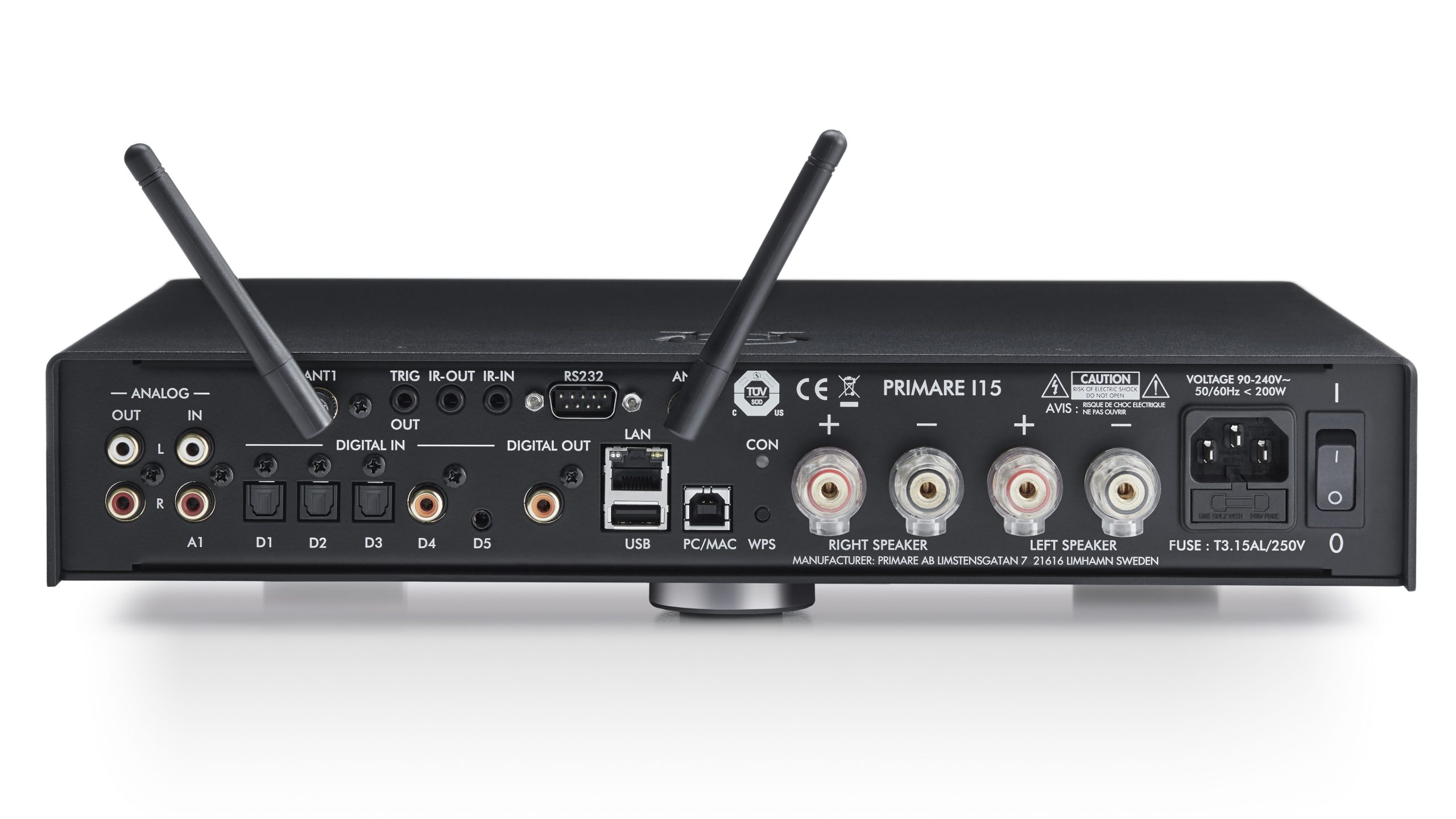
Tight and distinct sound
Dynaudio Evoke 20 are a pair of very good compact speakers, which reproduce the music with a solid soundtrack and large space. But they do not have all the sensitivity of the world, and they require a bit of the amplifier to bring out the speed of transients.
Primare I15’s biggest advantage is its laser-sharp midrange reproduction. The voice of Justin Vernon (Bon Iver) on Taylor Swift’s sore ballad Exile is reproduced very clearly and distinctly, and the characteristic rasping of the vocal cords comes out exceptionally well. Where the Dynaudio speakers with some amplifiers can sound a bit round and polished, the focus is kept. The contrasts between Swift and Vernon come out well, and the music is largely allowed to come out as it is recorded.
The deepest bass tones from the piano do not get as much focus. The breathing from the pedals could have had even more presence, and a speaker change to the floor-standing Sonus faber Olympica III confirms this. The bottom could have come out even better. But, still, what a great sound overall! There are not many amplifiers GBP 2,000 kroner that bring out the details in the music in this way, without sounding fake.
F2020 of Avenue Beat in remix version, with Jessie Reyez on guest vocals, has wonderful bass rhythms. It deserves a good amplifier that can keep a firm grip on what is happening. And where I feared that I15 Prisma would let go of the bass, it actually does not. Because while it is not as bass-strong as the Cambridge Audio Evo 150, it is both tight and resilient. In fact, firmer in the bass than the Lyngdorf TDAI-1120. The Primare amplifier can play quite loud as well, so that the room is filled with delicious tones.
But, of course, 60 watts sets its limits. If you think you can “go up to 11” without losing control, then think again. That requires more power. But you still go quite far, and floor-standing speakers with heavy bass is not a hindrance.
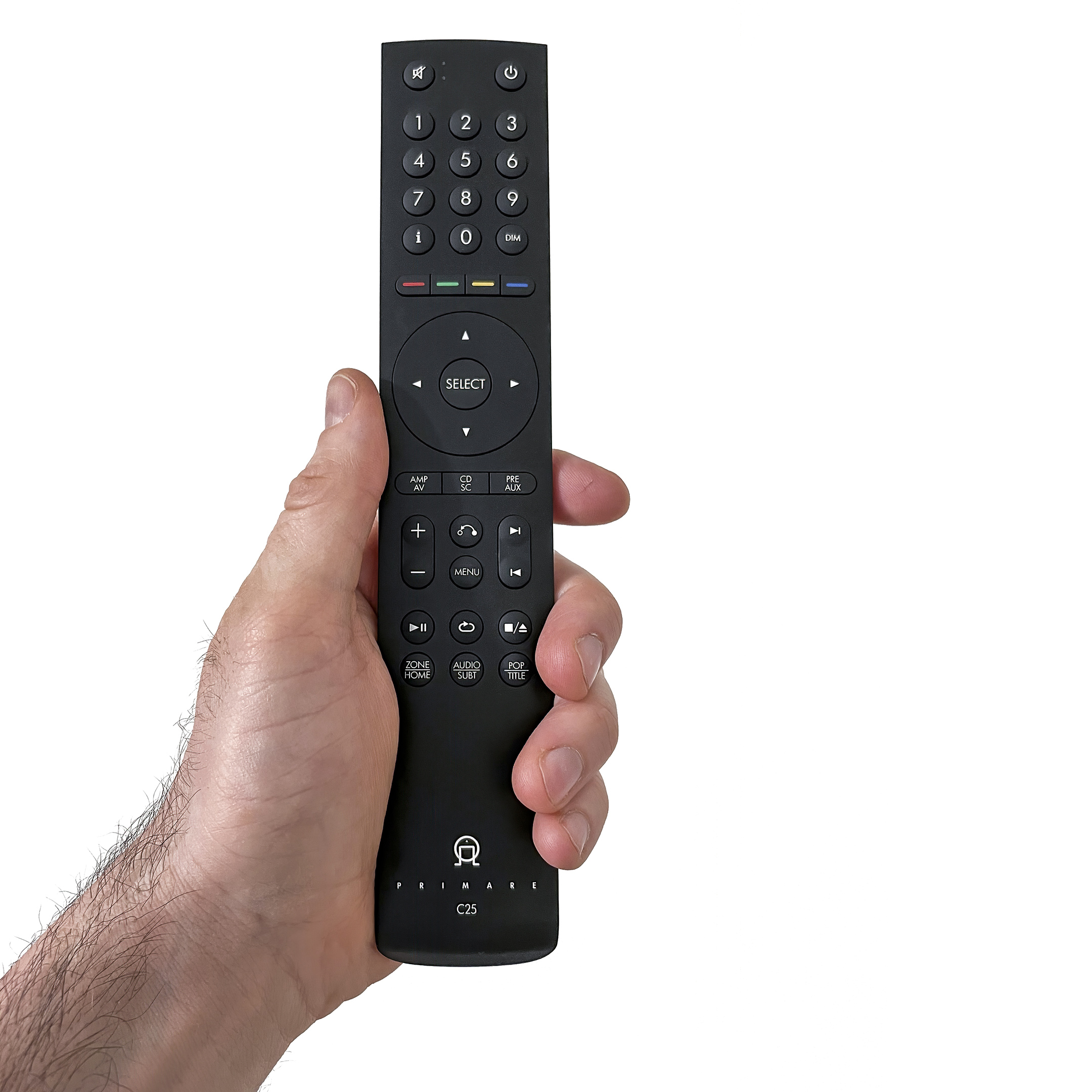
Classical music places great demands on the resolution of an amplifier. To bring out all the nuances and layers of strings, brass and woodwinds. I15 Prisma does a good job of communicating the instruments. Just listen to the third movement in Beethoven’s Piano Concerto No. 4 in G major (Op. 58). With piano by Krystian Zimerman, accompanied by London Symphony Orchestras under the steady hand of conductor Simon Rattles.
The attack in the instruments comes out well, and the dynamics impress. The amplifier keeps control with a tight line, and the timbre structures in the instruments come out well. The only thing I really miss is a little more impression of depth. You get more of the feeling that the musicians are sitting in a row across a long bench, than that they are distributed across a two-dimensional plane with width and depth. But this is nitpicking.
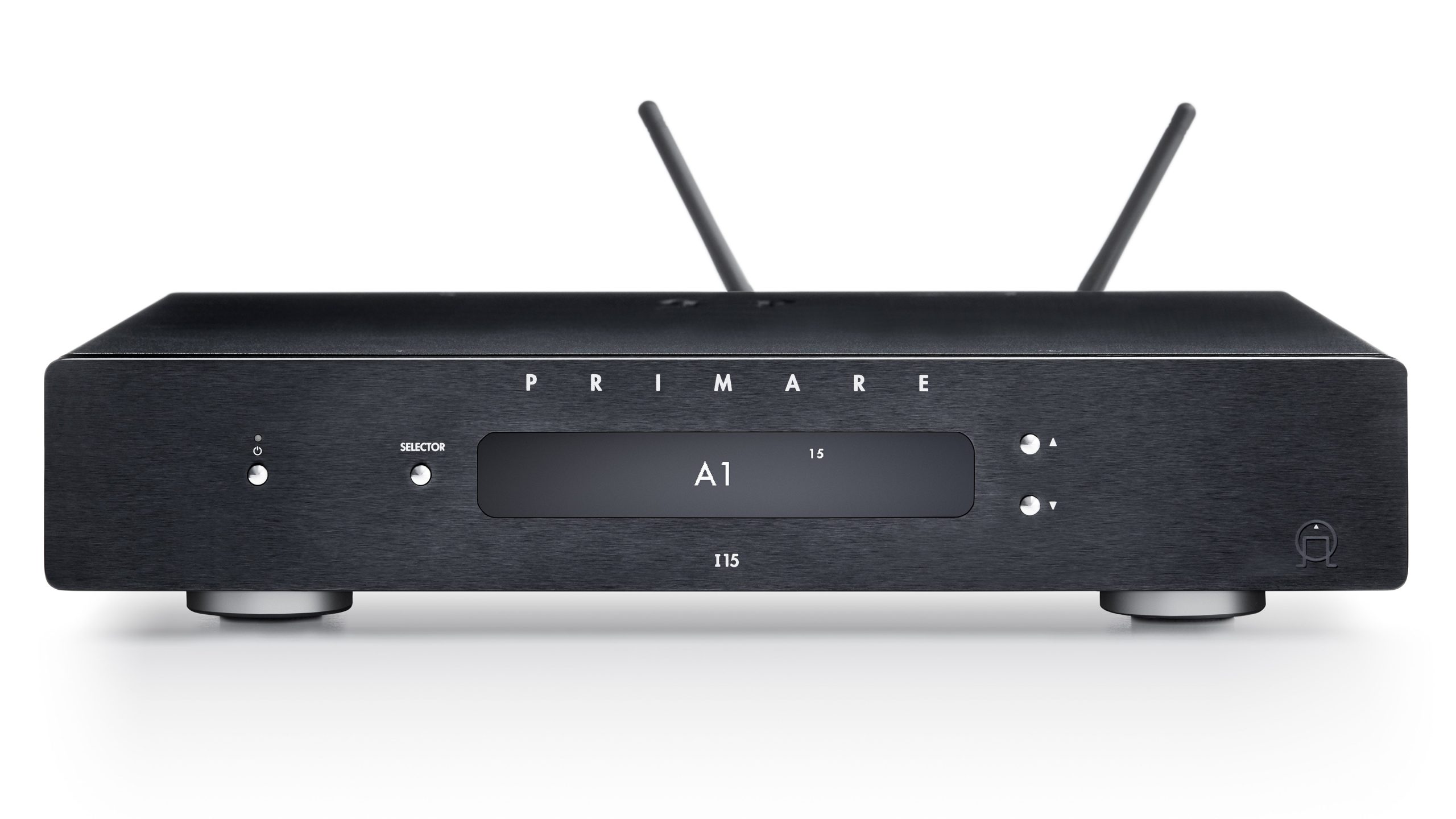
Primary I15 Prism: Conclusion
If you are looking for a compact amplifier with good rhythm and drive, while at the same time being resolved enough to convey the music in a believable way, Primare I15 Prisma should definitely be on the list. It has more power than the size suggests, and especially in the midrange range, it impresses with great control.
There is not much to miss here, and this is to be recommended to you who want something that is even a little more refined than Bluesound Powernode and others in its price range. 60 watts is a bit scarce if you expect to crank up the volume, but the amplifier goes more than loud enough to normal for a little loud listening. A clearly recommended amplifier in its price range.

We think
Tight and good sound, many connections and power options. 60 watts is not a lot.
1500 €
Specifications
- Output power: 2 x 60 W in 8 Ohm / 2 x 100 W in 4 ohms
- Damping factor: Not specified
- Inputs: 1 RCA, 3 optical, 2 coax, 1 USB-A, 1 USB-B, 1 Ethernet, 1 IR input
- Outputs: 1 RCA, 12V trigger, IR out, RS232
- Streaming technologies: Chromecast, AirPlay 2, Spotify Connect, Roon Ready (future update), Bluetooth
- Dimensions: 7.3 cm x 35 cm x 32.9 cm (H x W x D)
- Weight: 6.4 kg
- Color: Black with front panel in silver or. black
- Web: lydglede.no
